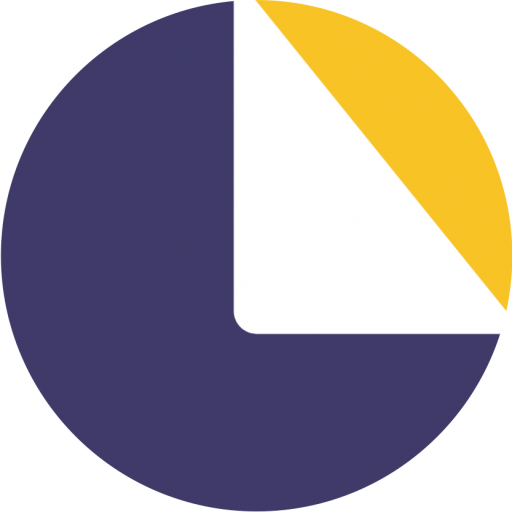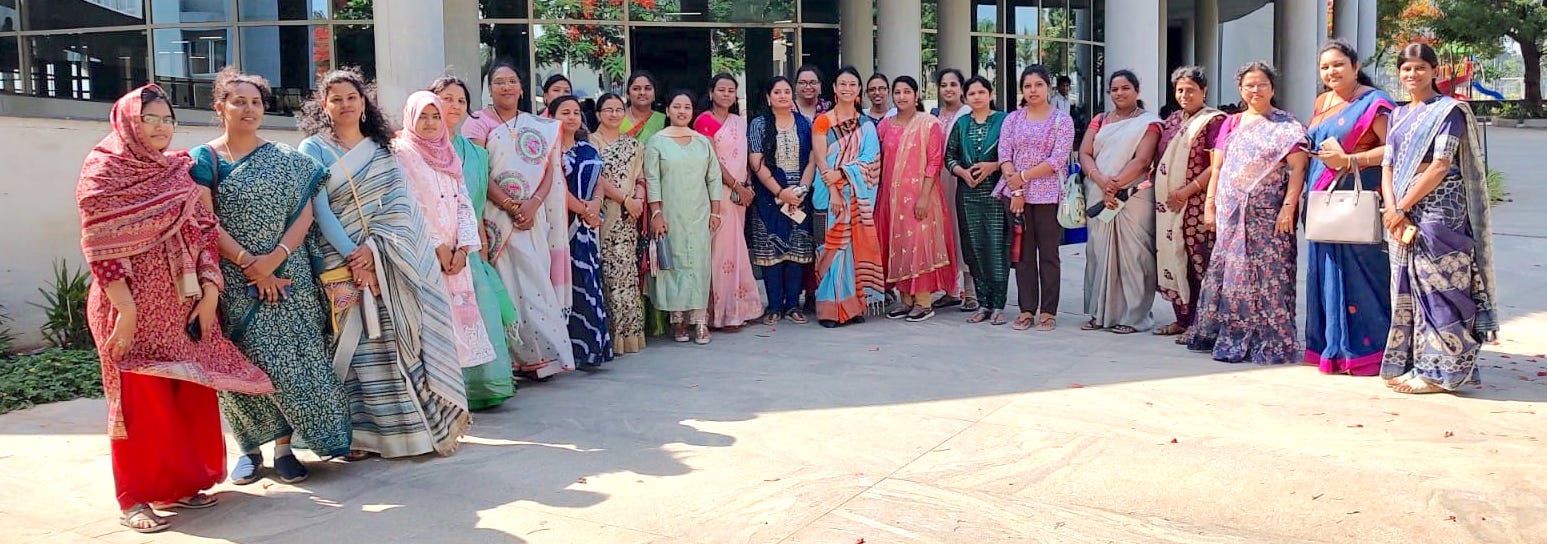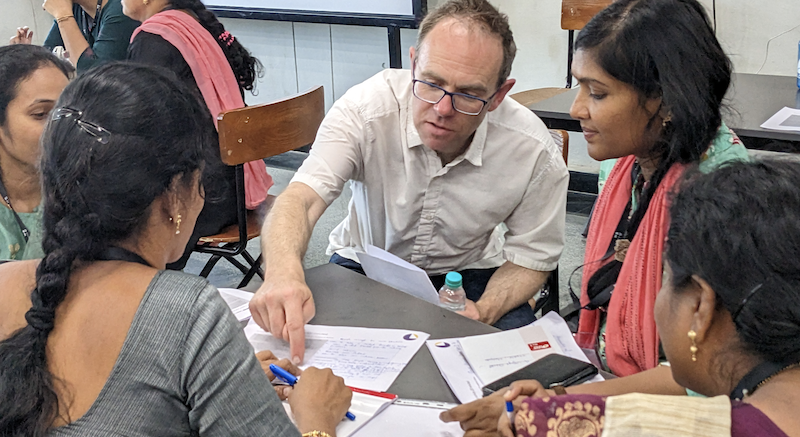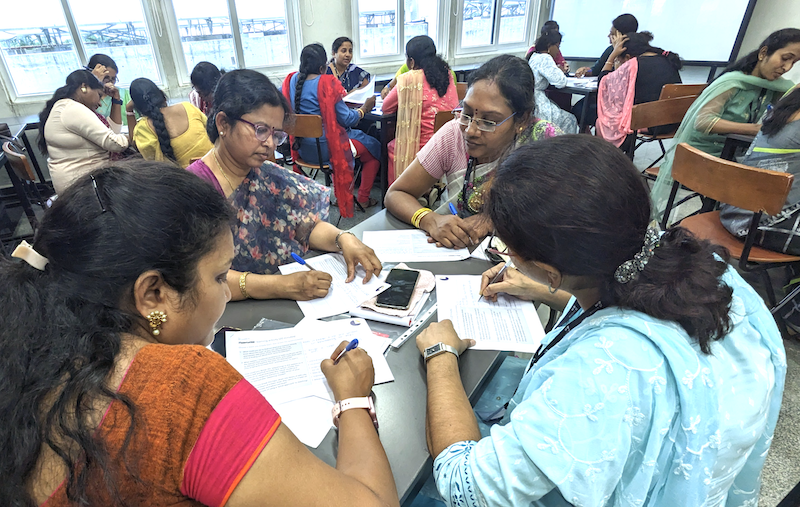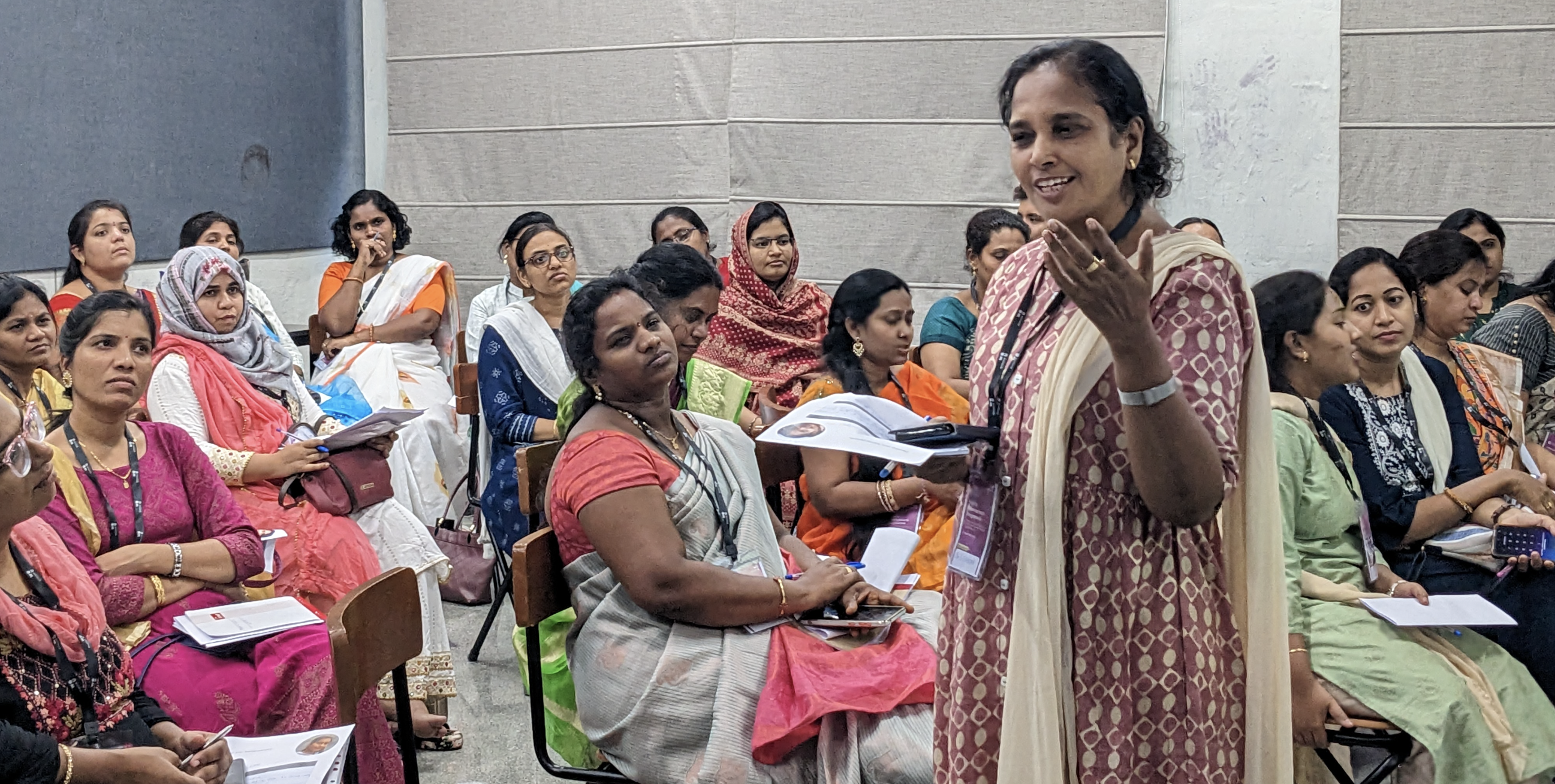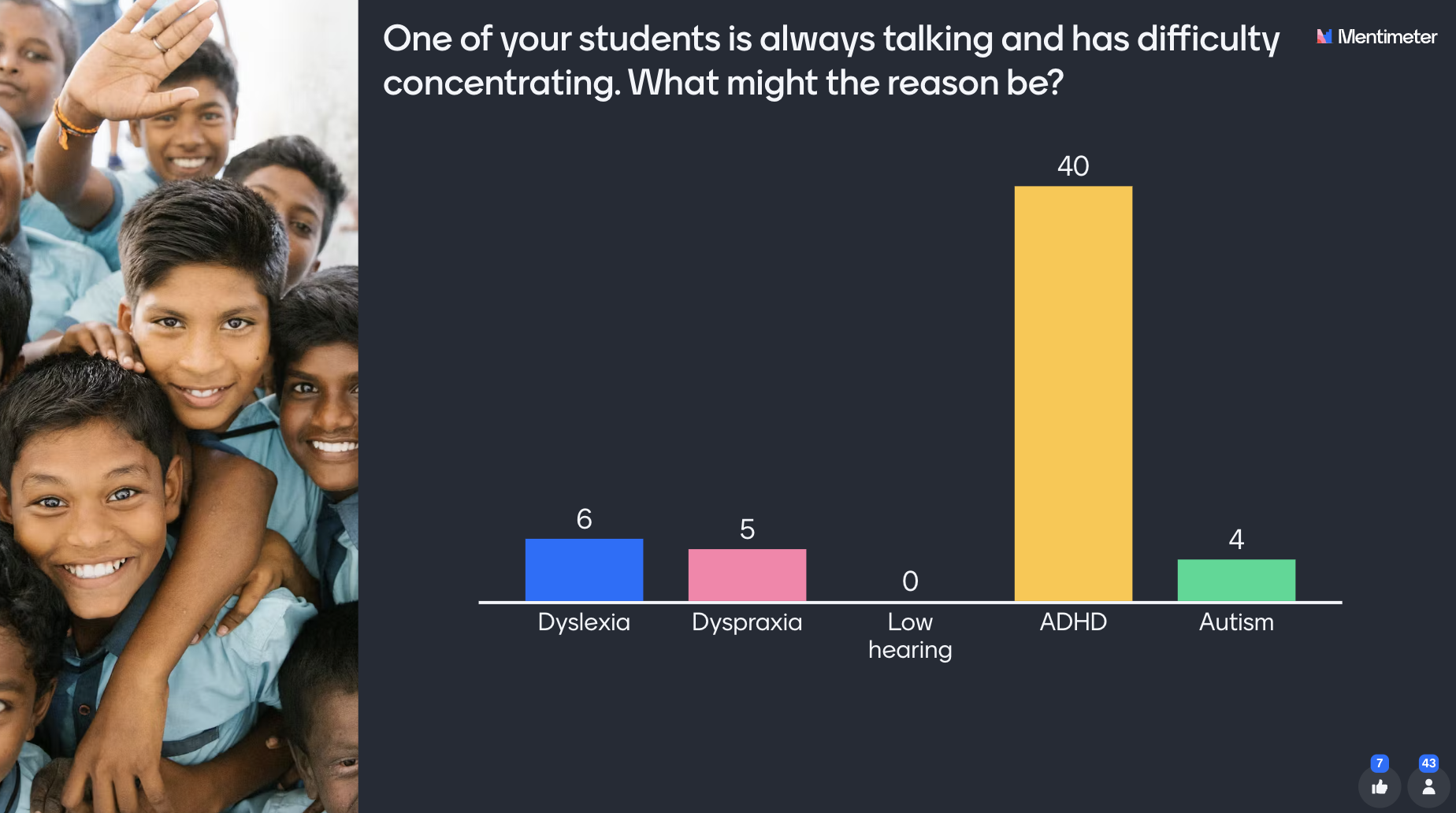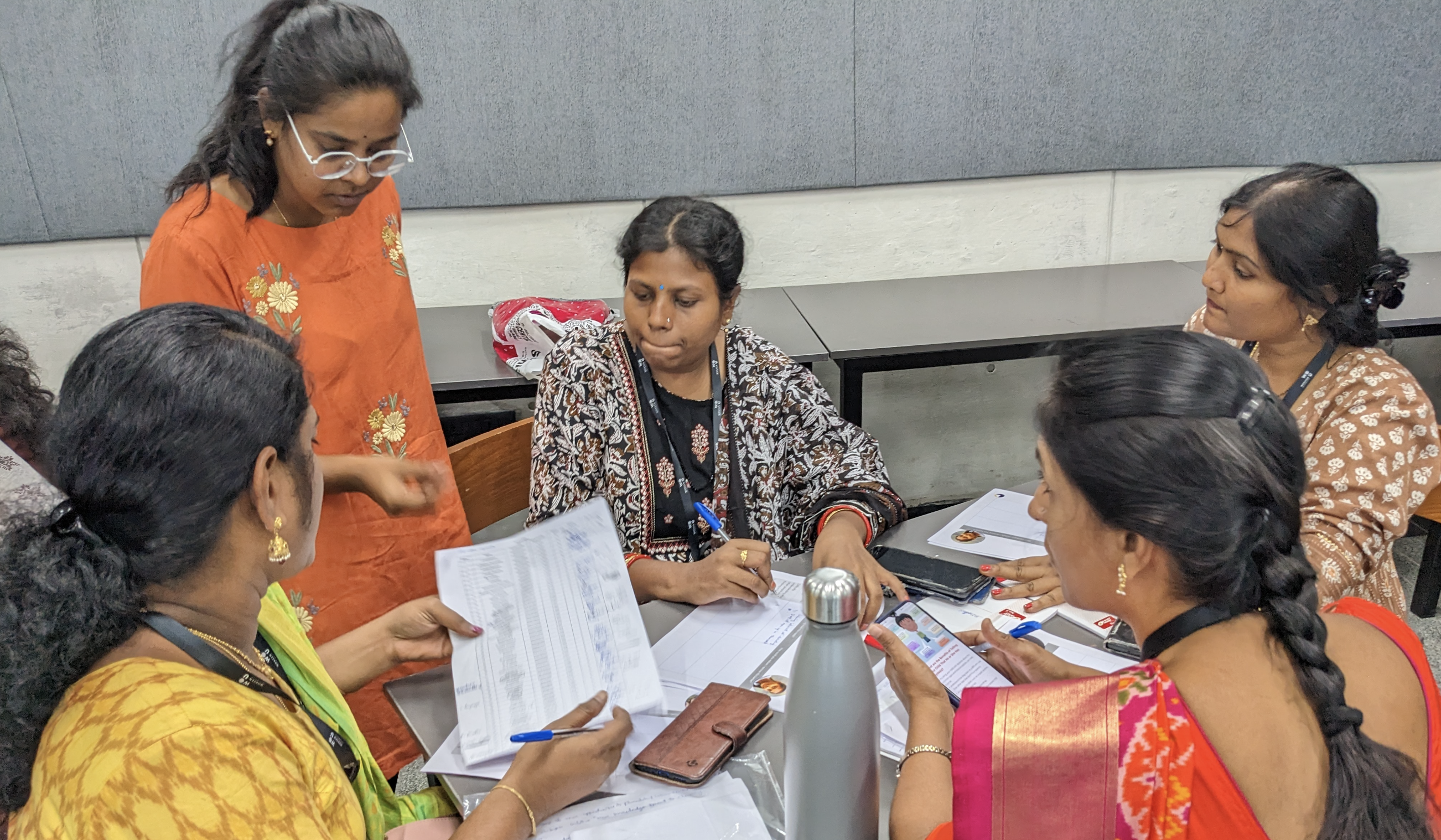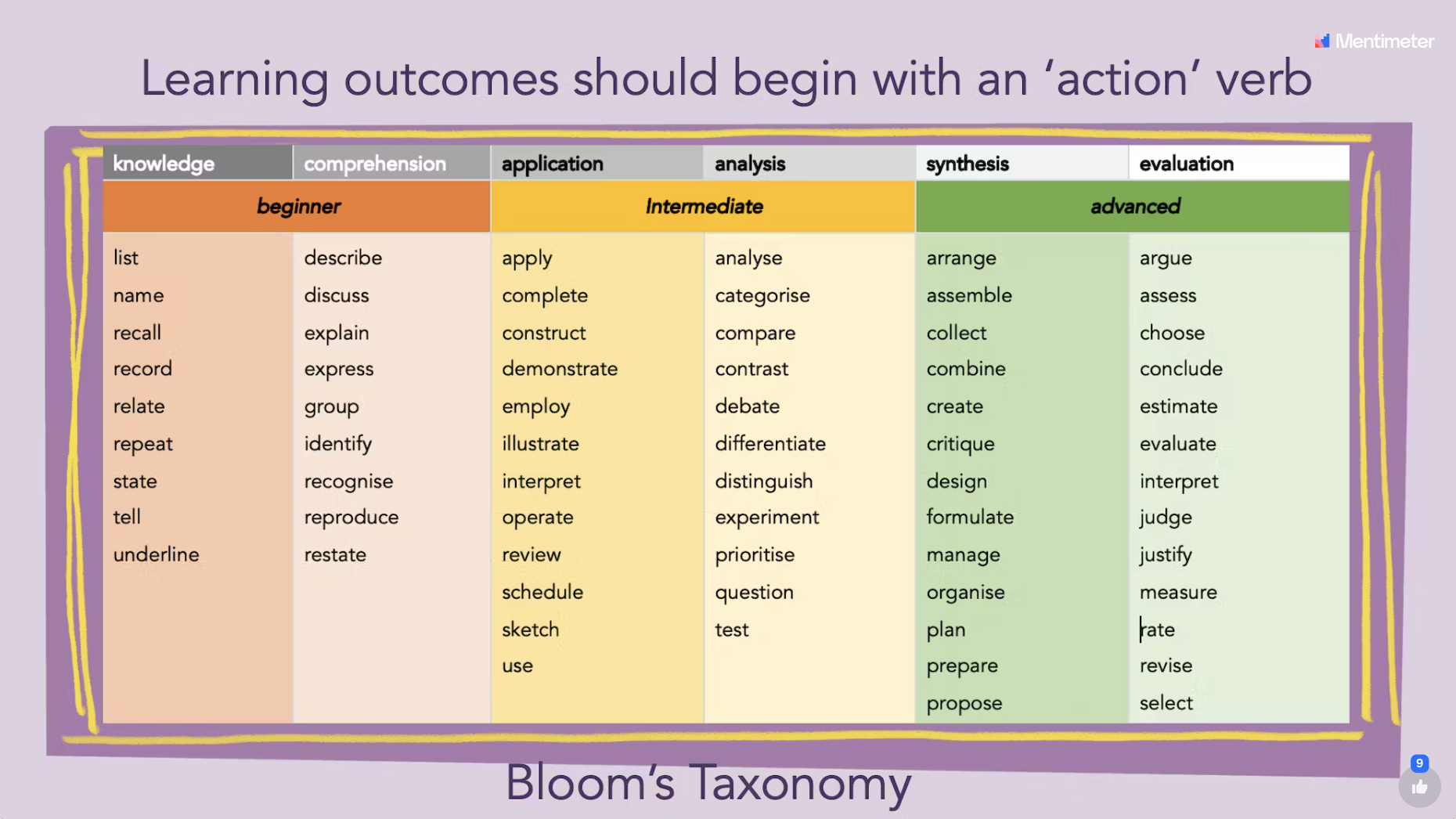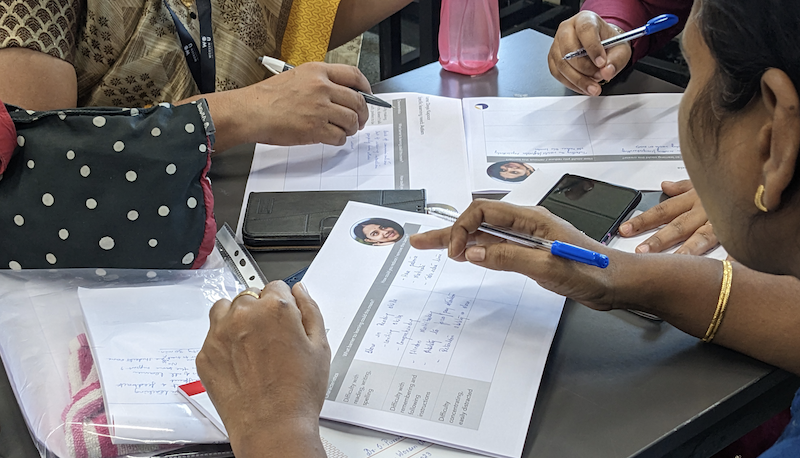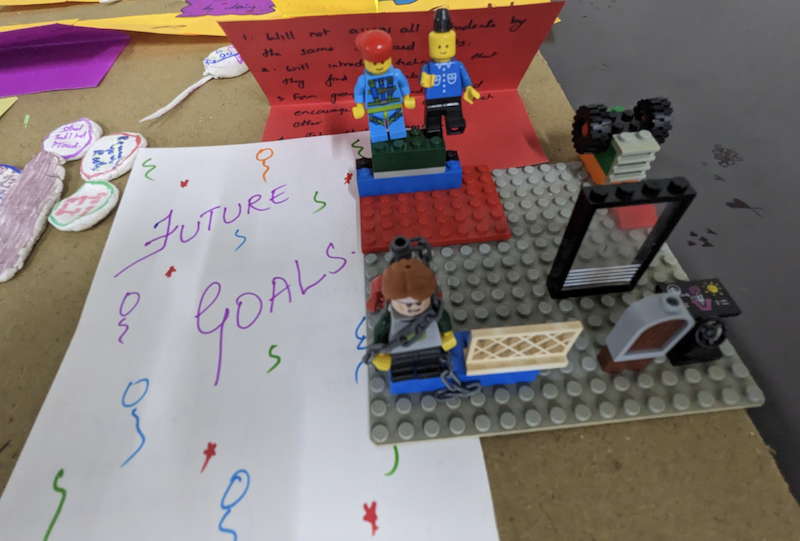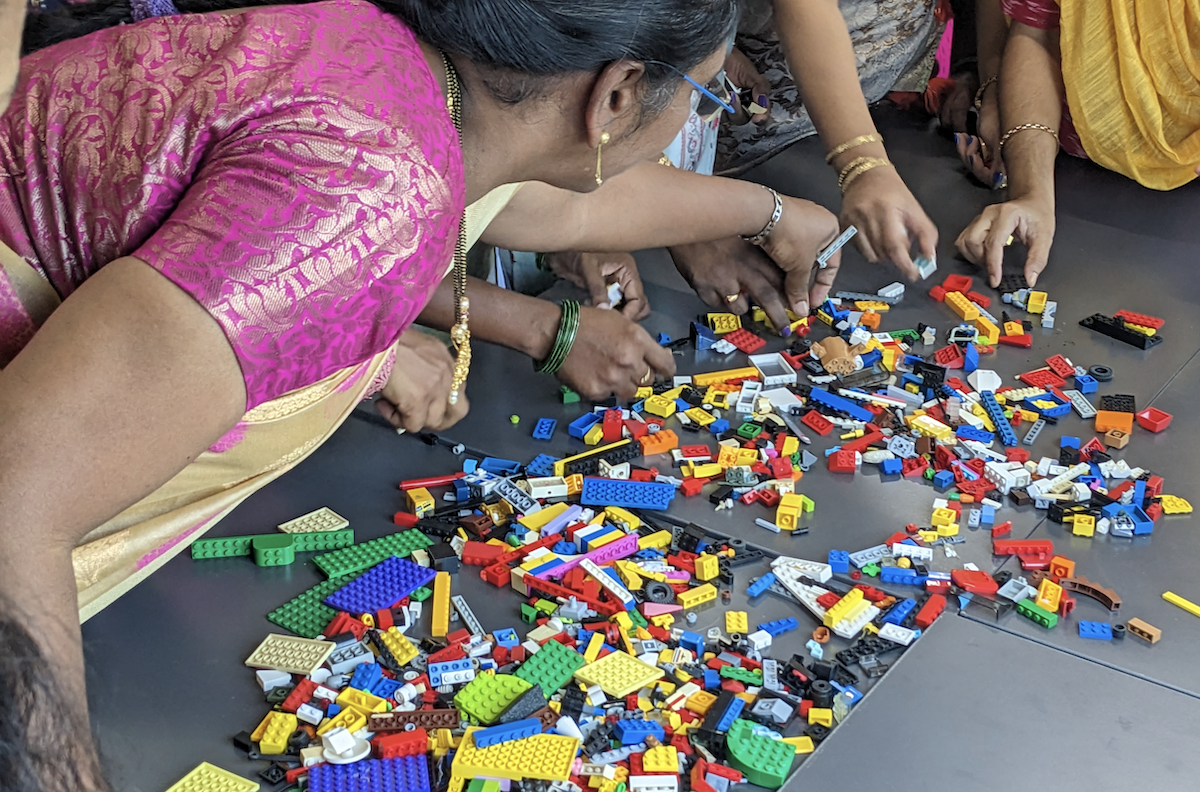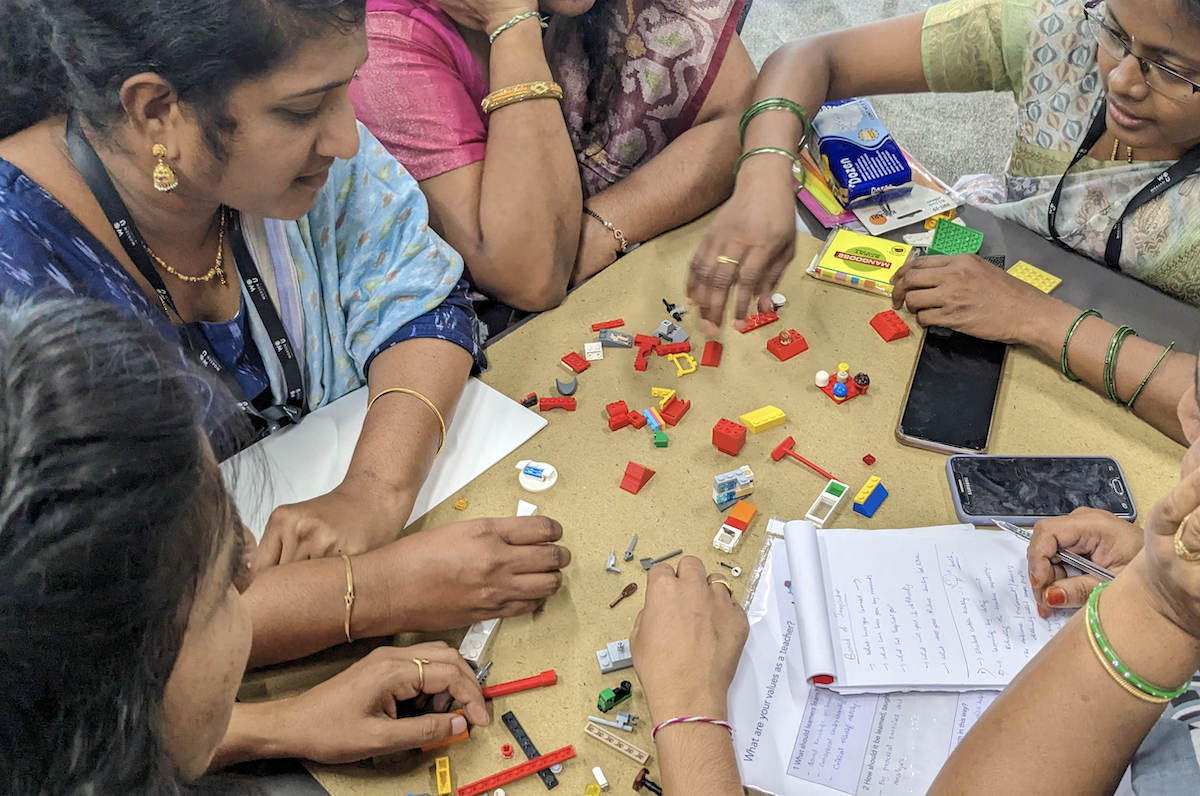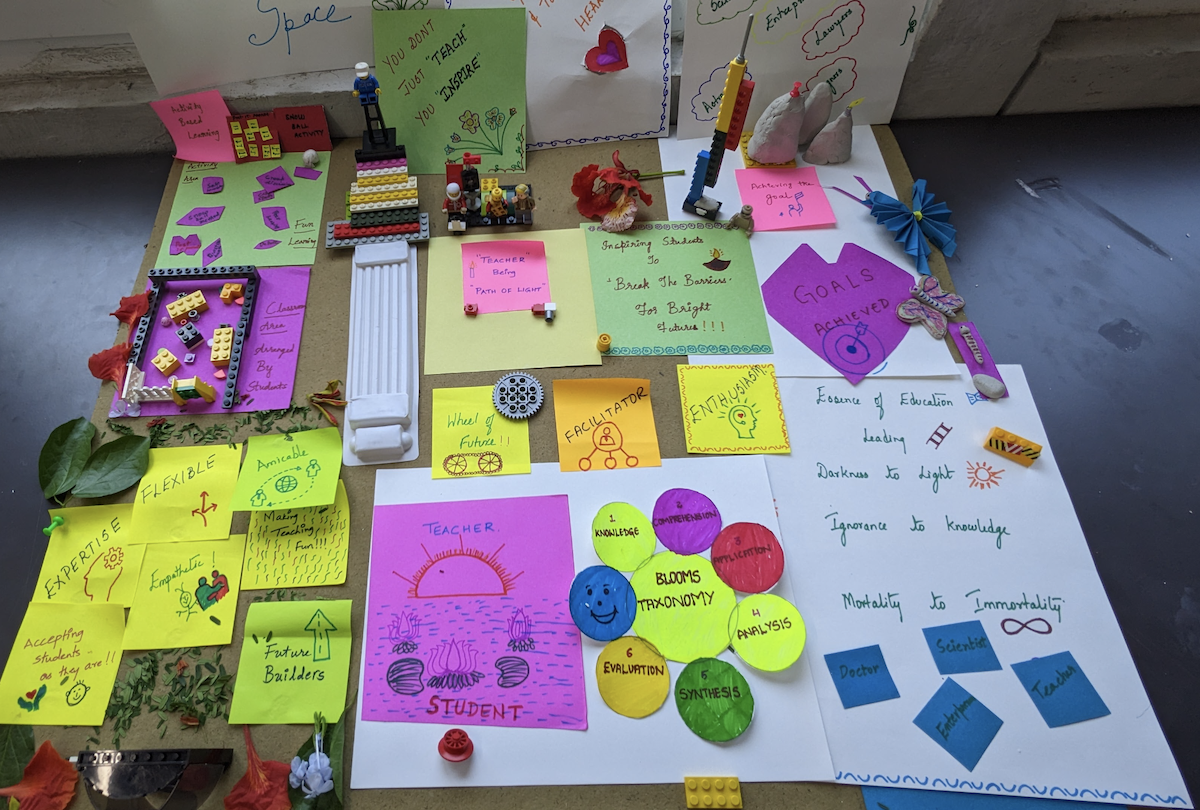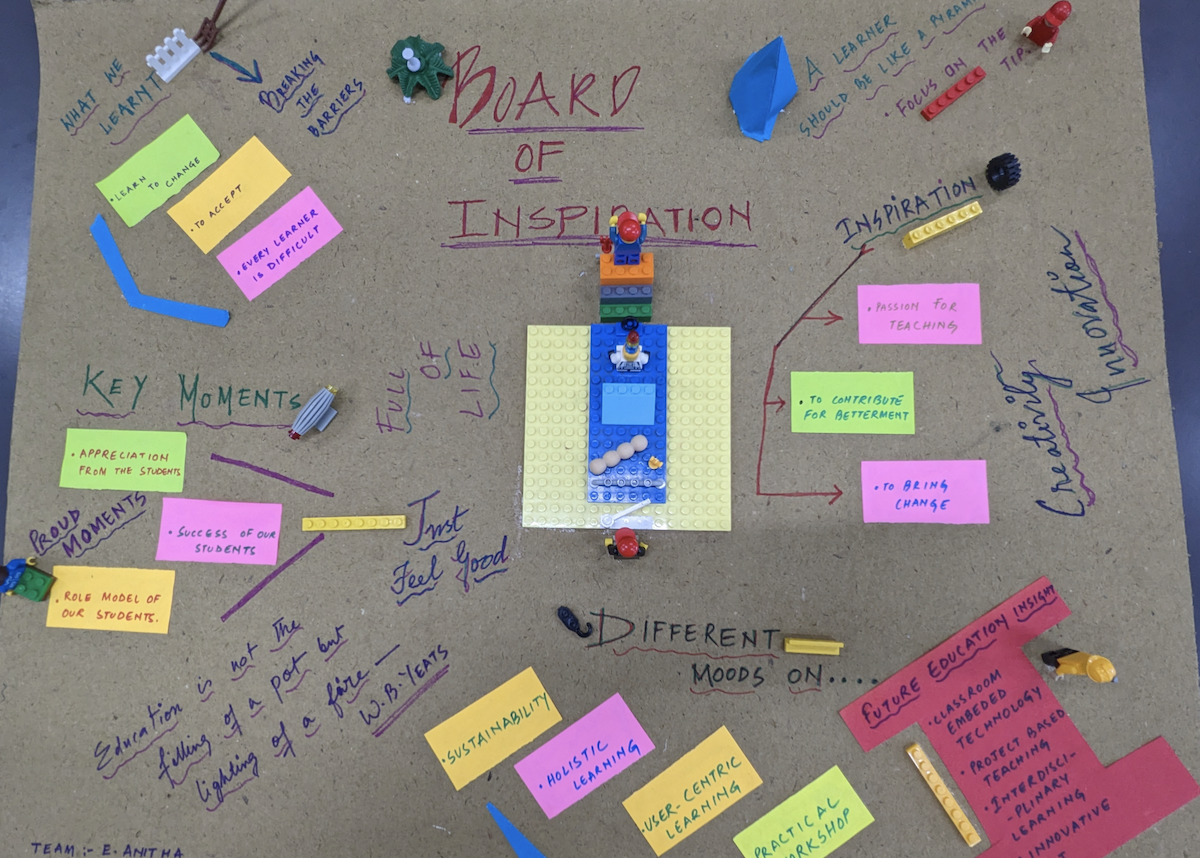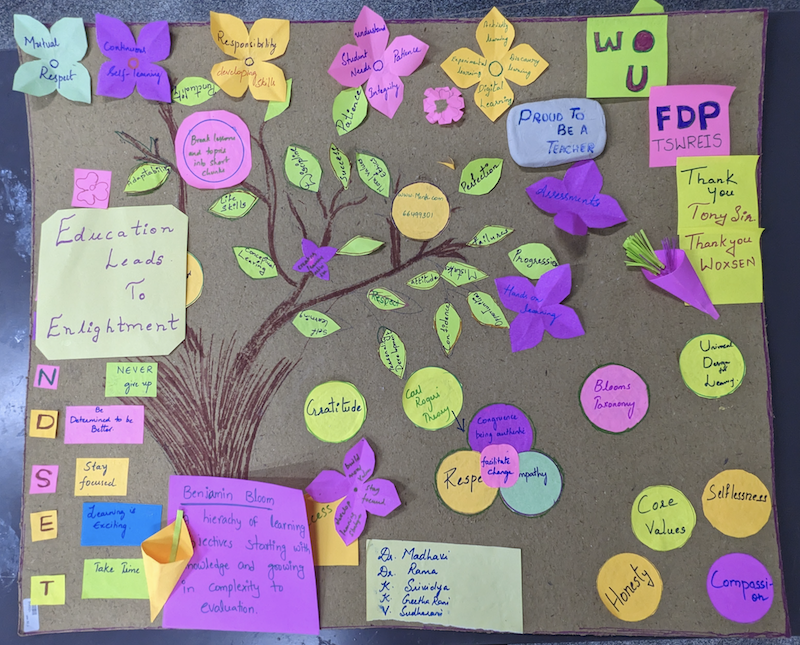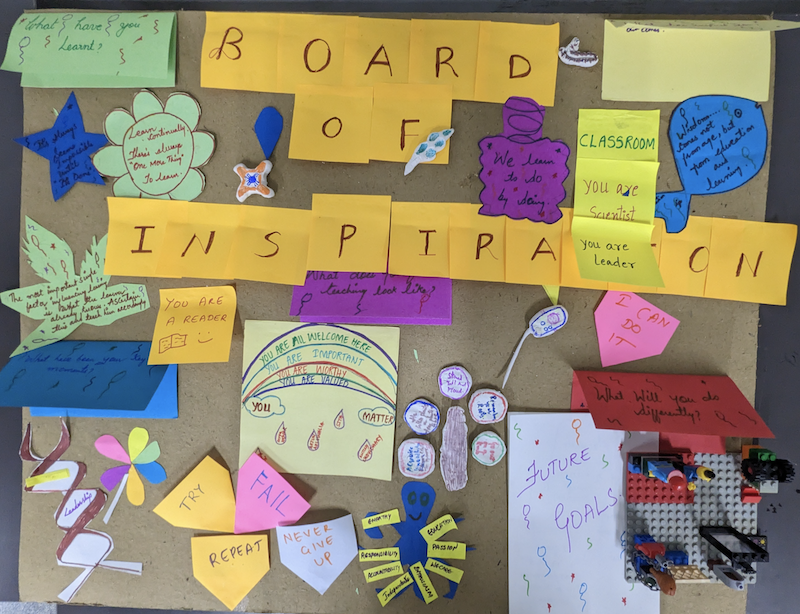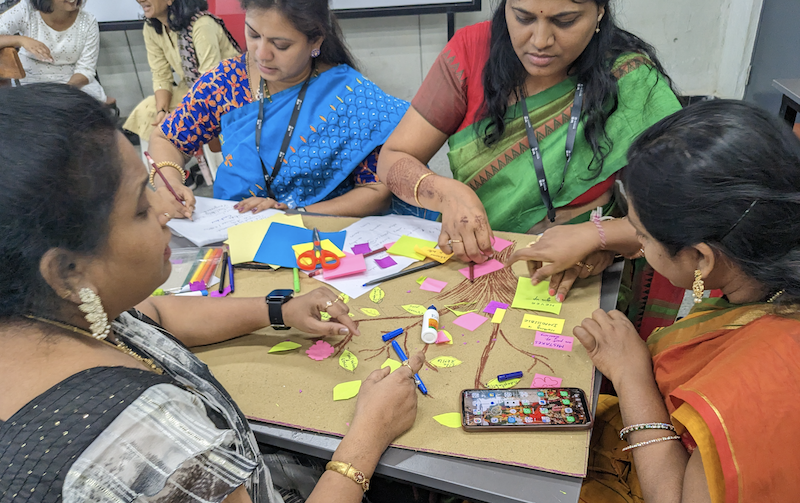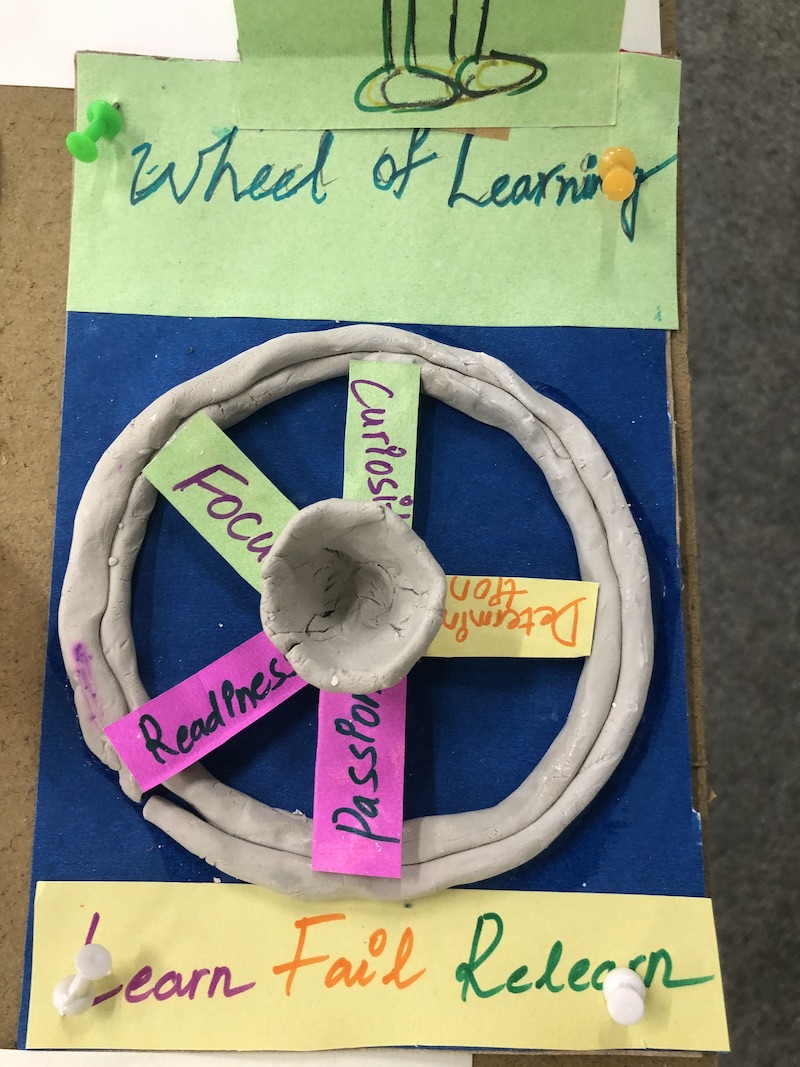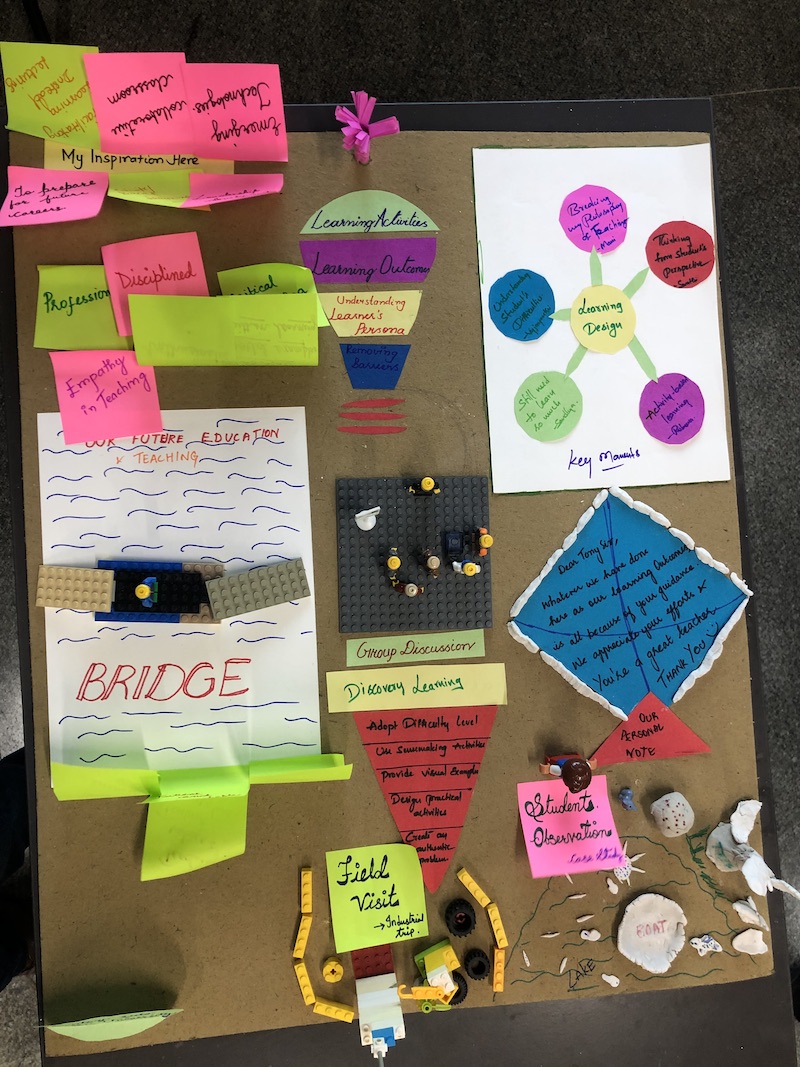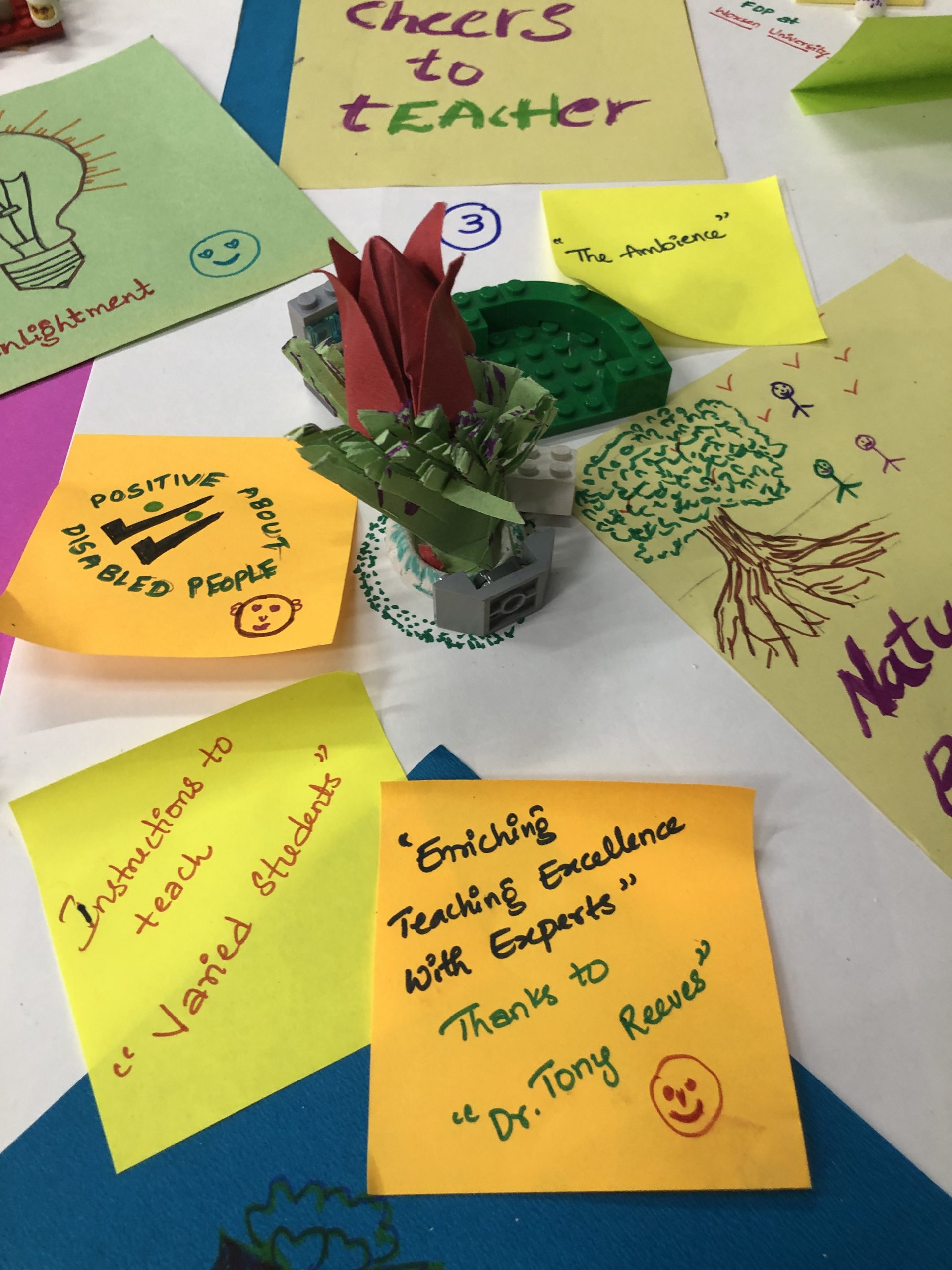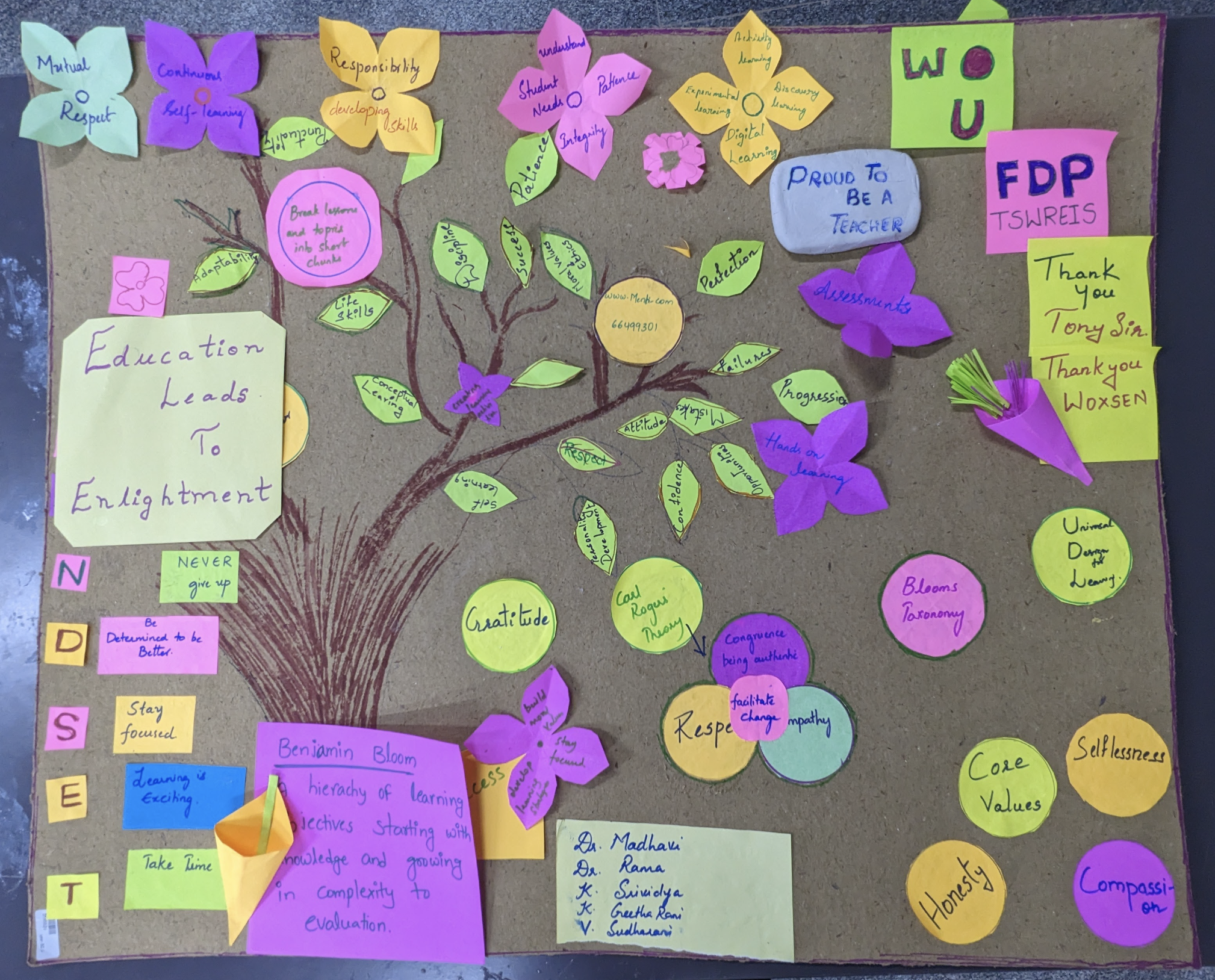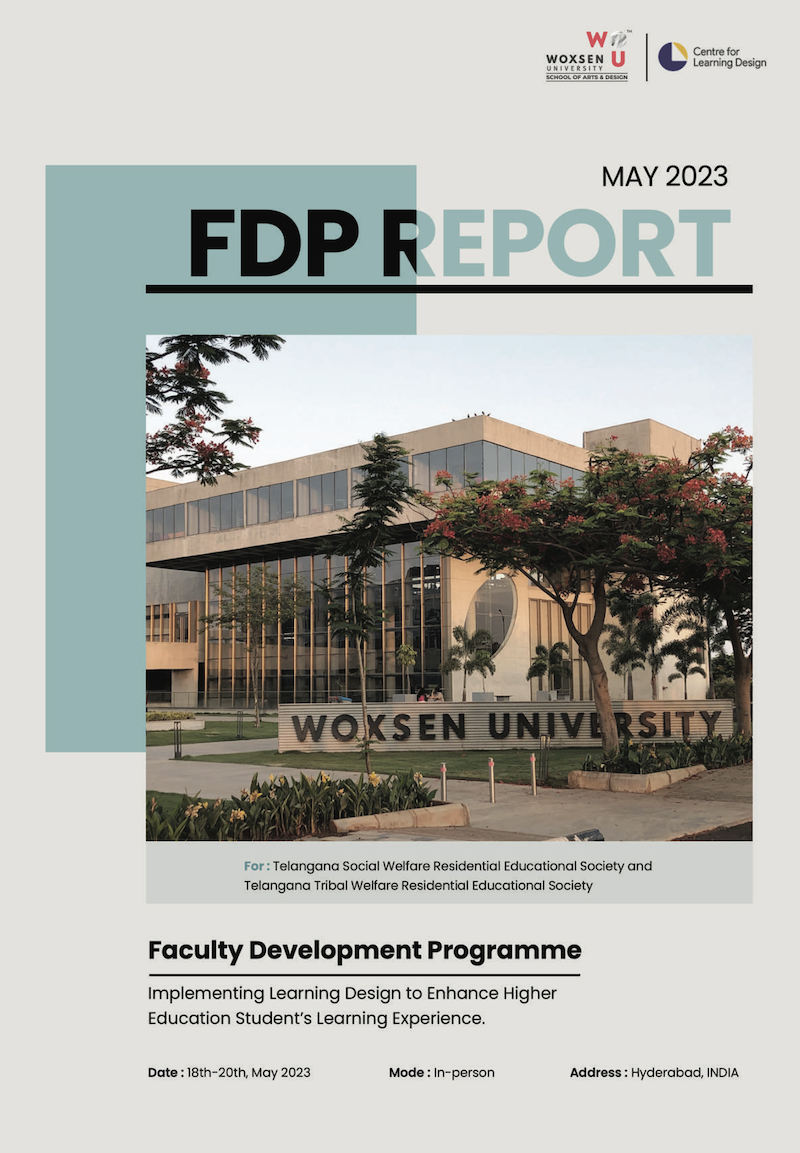FDP for the Telengana Social and Tribal Welfare Education Institutions Societies
May 2023, Woxsen University, India
Implementing Learning Design to Enhance Students’ Higher Education Learning Experience
Context to the FDP
The Telengana Social and Tribal Welfare Educational Institution Societies do incredible work in supporting students from rural communities into Higher Education.
Their coordinator, Dr. Pavani Ayinampudi, asked the Centre for Learning Design (CLD) to develop a programme of workshops. The aim was to help faculty develop new approaches to supporting students using learning design principles and techniques.
The planning phase
Before creating the programme of workshops, the CLD team conducted a survey and two online scoping sessions with the Telengana faculty to diagnose their needs.
During the workshops, data was gathered using Mentimeter – a tool which enables participants to vote and respond to questions in real time using their phones or devices.
These workshops enabled the team to identify the specific areas of their teaching, learning and assessment that the faculty wanted to develop. These areas were then used as the foundations for the 3-day workshops.
Day 1: Using active learning strategies
The first day of the FDP began with a welcome from Woxsen University’s Vice President, Dr. Raul Villamarin Rodriguez. The programme then began with an icebreaker activity where participants were asked to draw how they viewed themselves as a teacher. This produced some wonderful images that helped faculty reflect on their role as educators.
The CDL team then guided the Faculty through two core learning theories: Experiential Learning and Discovery Learning. Working in small groups, the poarticipants used a series of questions to apply these theories in their teaching. This enabled them to identify ways of making learning more active and student-centred.
In the final part of the day, participants worked in groups to create ‘learner personas’. These personas helped faculty use empathy to build a clearer sense of each individual student and their needs.
click image to view gallery
Day 2: Designing inclusive, interactive teaching
Day two began with an early morning yoga session to loosen up the body and help focus the mind.
Following breakfast, the first session explored the impact of neurodiversity on how we design learning and teaching. The participants examined common characteristics of Dyslexia, Autism, Attention Deficit Hyperactivity Disorder (ADHD) and Dyspraxia, and considered how to remove barriers to learning using the Universal Design for Learning framework.
In the afternoon session, the focus shifted onto the importance of writing clear learning outcomes. Participants identified common problems with learning outcomes, and used Bloom’s Taxonomy to practice writing outcomes to make learning visible and easier to assess.
click image to view gallery
Day 3: Planning and implementation
After a second yoga session to focus the mind, the final day began with an exploration of how we facilitate change in others. This session enabled the participants to see the value in being congruent and empathic towards students, and the power of acceptance in providing the foundations for personal growth.
For their final activity, the participants worked in groups to create a ‘board of inspiration’. The aim was to use creative methods and metaphors to visualise the key moments for them during the FDP. Participants were also asked to consider what their future classroom might look like based on their new knowledge of inclusivity and active learning.
Each group produced a video of their board to explain their process.
click image to view gallery
